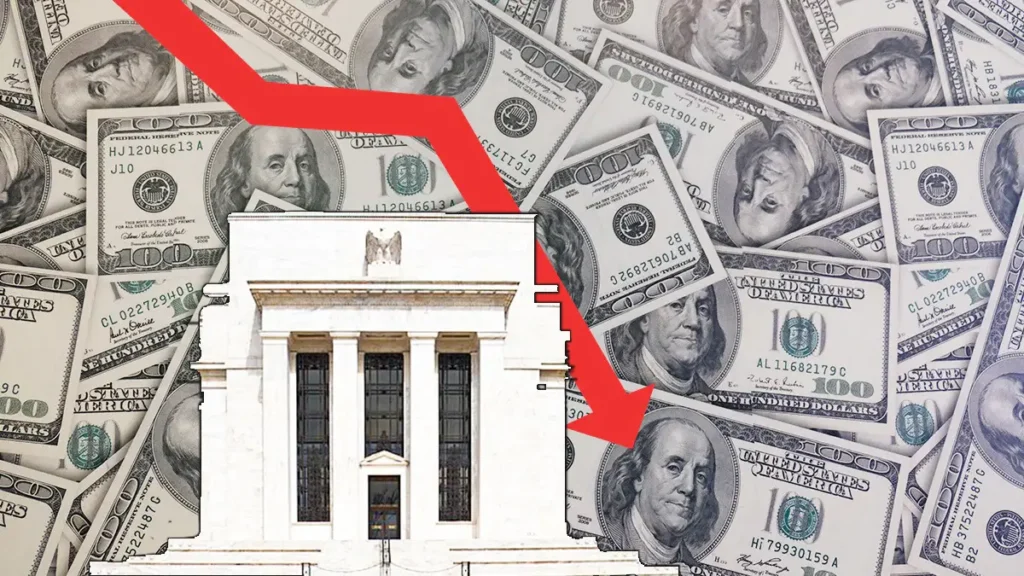In the most recent Beige Book by the Federal Reserve, capturing economic data until November 17, a glimpse into the US economy emerges.
It portrays a scenario where the economy is slowing down, and consumers are becoming more price-conscious. This shift is noteworthy, indicating changes in how people respond to economic conditions.
It’s interesting to note the insights from the latest Beige Book. Economic indicators and consumer behavior are crucial in understanding the overall economic landscape.
Additionally, the report pointed out a shrinking economic outlook for the upcoming six to 12 months. This underscores a rising level of uncertainty and worries regarding future economic conditions.
Consumers are becoming price-sensitive
The recent Fed Beige Book report unveiled that consumers are increasingly price-sensitive, impacting their choices when making purchases. Furthermore, retail sales, encompassing the auto sector, demonstrated varied outcomes.
A significant drop was observed in the buying of non-essential items and long-lasting goods like furniture and appliances.
This trend highlights an increasing price sensitivity among consumers, a shift that could carry significant implications for retailers, especially with the holiday season approaching.
On the flip side, travel and tourism activities stayed relatively robust, suggesting resilience in this sector. Nevertheless, the demand for transportation services was sluggish, signaling persistent challenges within the industry.
Consumer credit holds up well, but an increase in consumer delinquencies raises a potential red flag.
Price increases showed signs of moderation across Districts, although prices remained elevated. Many experienced a decrease in freight and shipping costs, while the prices of various food products rose.
Some highlighted that costs for construction inputs, such as steel and lumber, had stabilized or even decreased.
Utilities and insurance costs increased notably across Districts. Pricing power exhibited variation, with service providers finding it easier to pass through increases than manufacturers.
Two Districts identified an increased cost of debt as an impediment to business growth. The majority of Districts anticipate moderate price increases to persist into the next year.
Manufacturing and business outlook as per the Beige Book
Manufacturing activity showed a mixed performance, with manufacturers’ outlooks weakening in certain areas.
There was a slight decrease in the demand for business loans, especially for real estate loans, indicating a sense of caution among businesses in taking on new debt.
Agriculture conditions stayed steady to slightly improved, with farmers benefiting from higher selling prices, though yields showed mixed results.
On the other hand, commercial real estate activity continued its downward trajectory, especially in the office segment, and there was a softening in multifamily activity.
Furthermore, there was a slight decline in residential sales, contributing to higher inventories of available homes.
Two districts pointed out that the increased cost of debt was hindering business growth, possibly indicating concerns about financing conditions.
Labor market shifts
The demand for labor continued to ease, with most Districts reporting flat to modest increases in overall employment.
A majority of Districts mentioned the availability of more applicants, and several observed improved retention as well.
Reductions in headcounts through layoffs or attrition were reported, and some employers felt comfortable letting go of low performers.
However, several Districts continued to describe labor markets as tight, with skilled workers in short supply.
Wage growth stayed modest to moderate in most Districts, with many noting a relaxation in wage pressures and several reporting declines in starting wages.
While some wage pressures persisted, there were reports of continued challenges in attracting and retaining high performers and workers with specialized skills.
Market dynamics
The US dollar index (DXY) declined, reversing its earlier gains following stronger-than-expected Q3 GDP data.
Bonds rallied as Treasury yields experienced a notable decline, with the 10-year yield dropping to 4.26%, marking its lowest level since mid-September.
The iShares 20+ Year Treasury Bond ETF (NASDAQ:TLT) experienced a surge of 1.2%. November 2023 stands out as the strongest month for long-dated Treasuries since September 2011, with the TLT ETF showing an impressive gain of 10.8%.
During the same period, stocks maintained a modestly positive performance for the day, with the SPDR S&P 500 ETF Trust (NYSE:SPY) seeing a 0.2% increase.
Blue-chip stocks in the SPDR Dow Jones Industrial Average ETF (NYSE:DIA) outperformed, rising by 0.5%.
Read More: The Price of Money is Rising, and It’s Not Just Fed’s Fault
